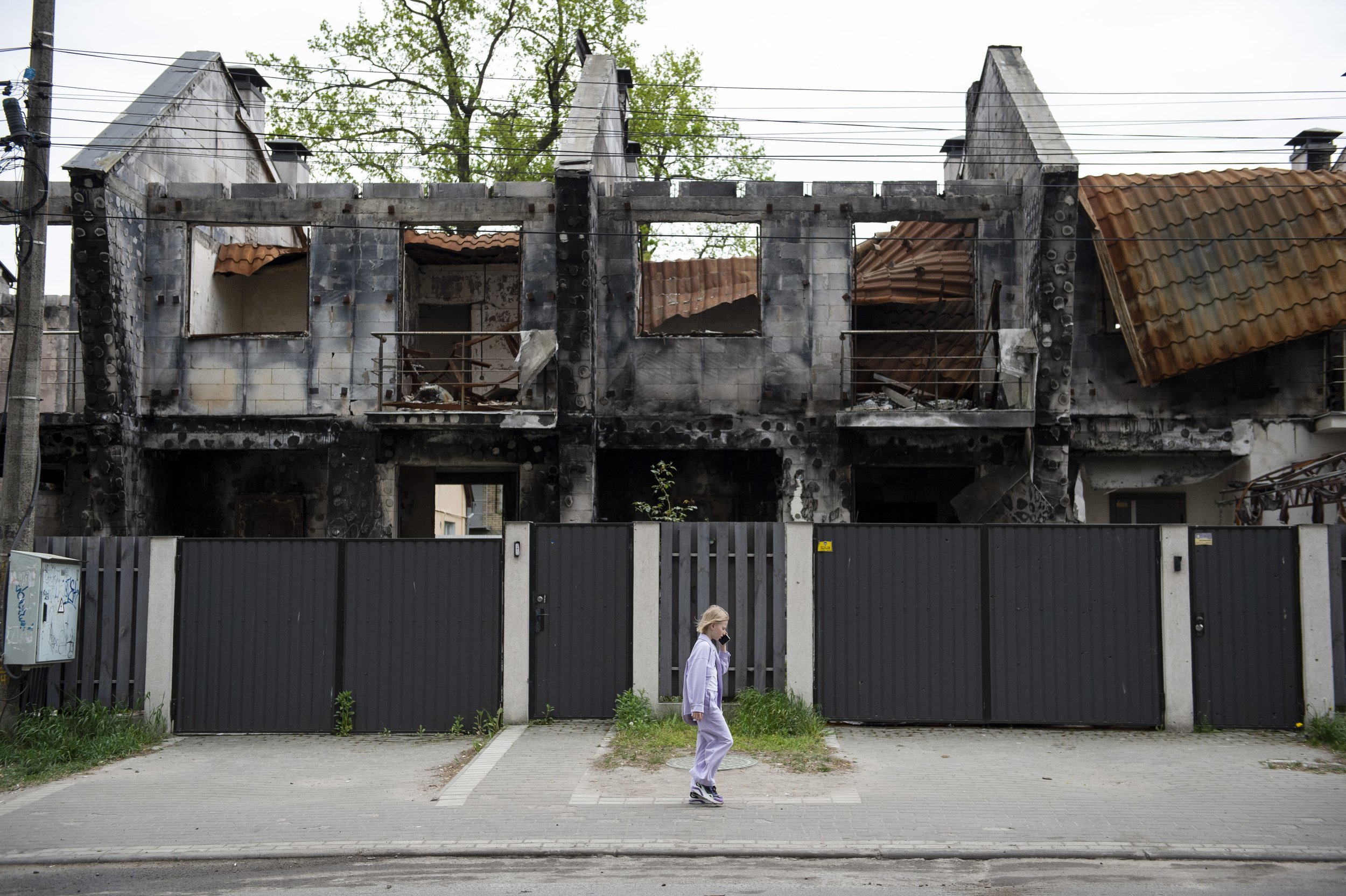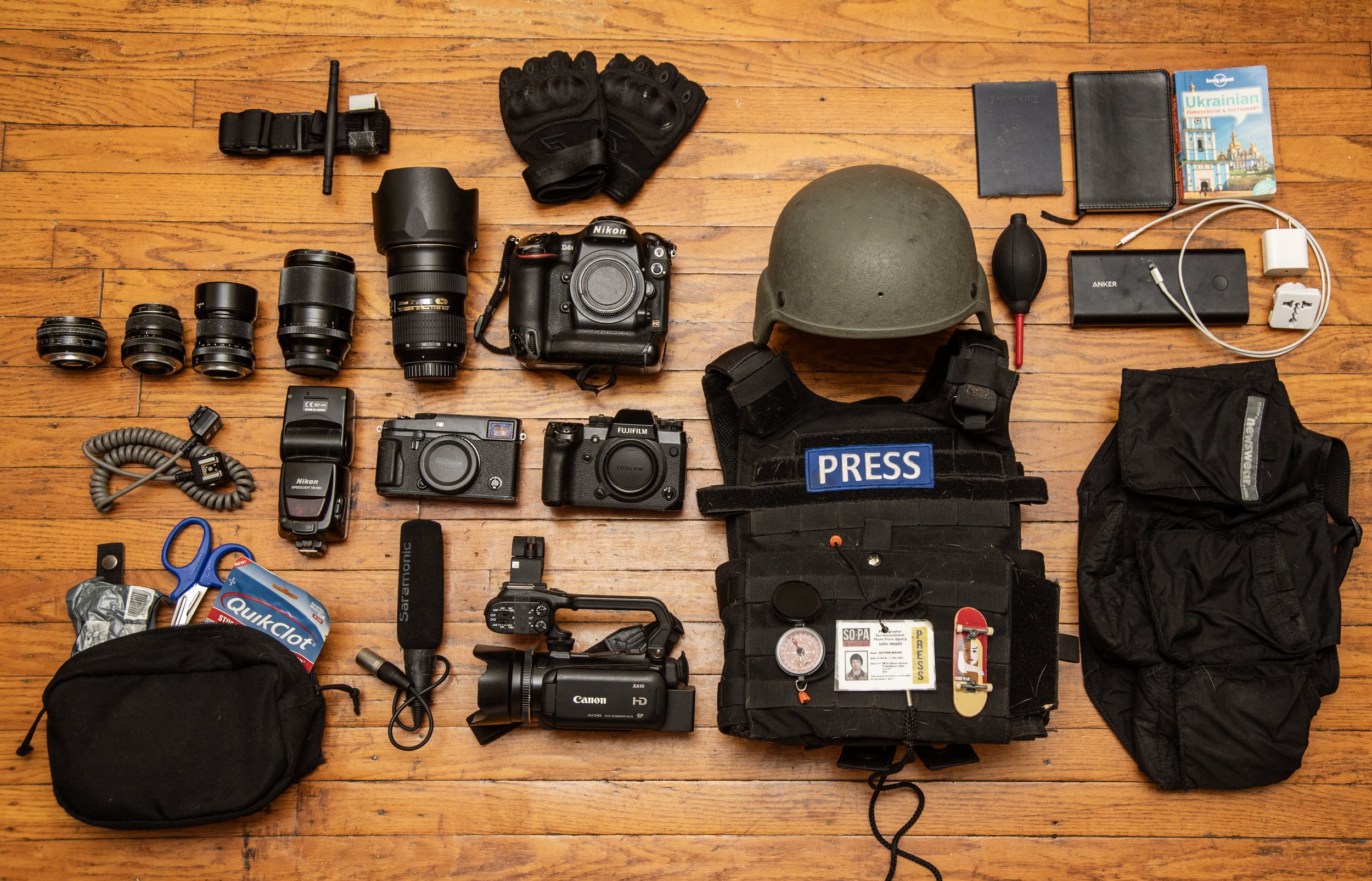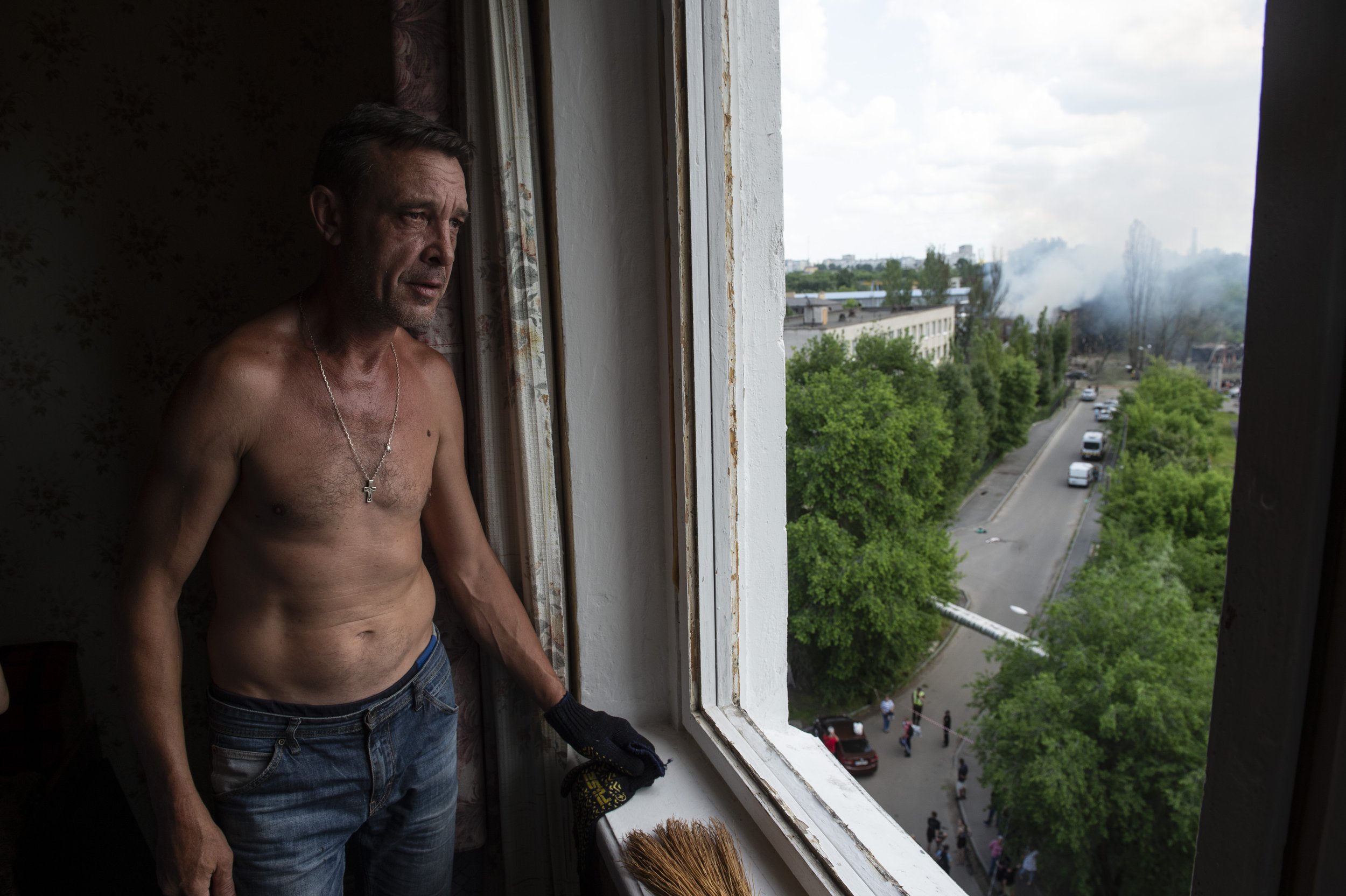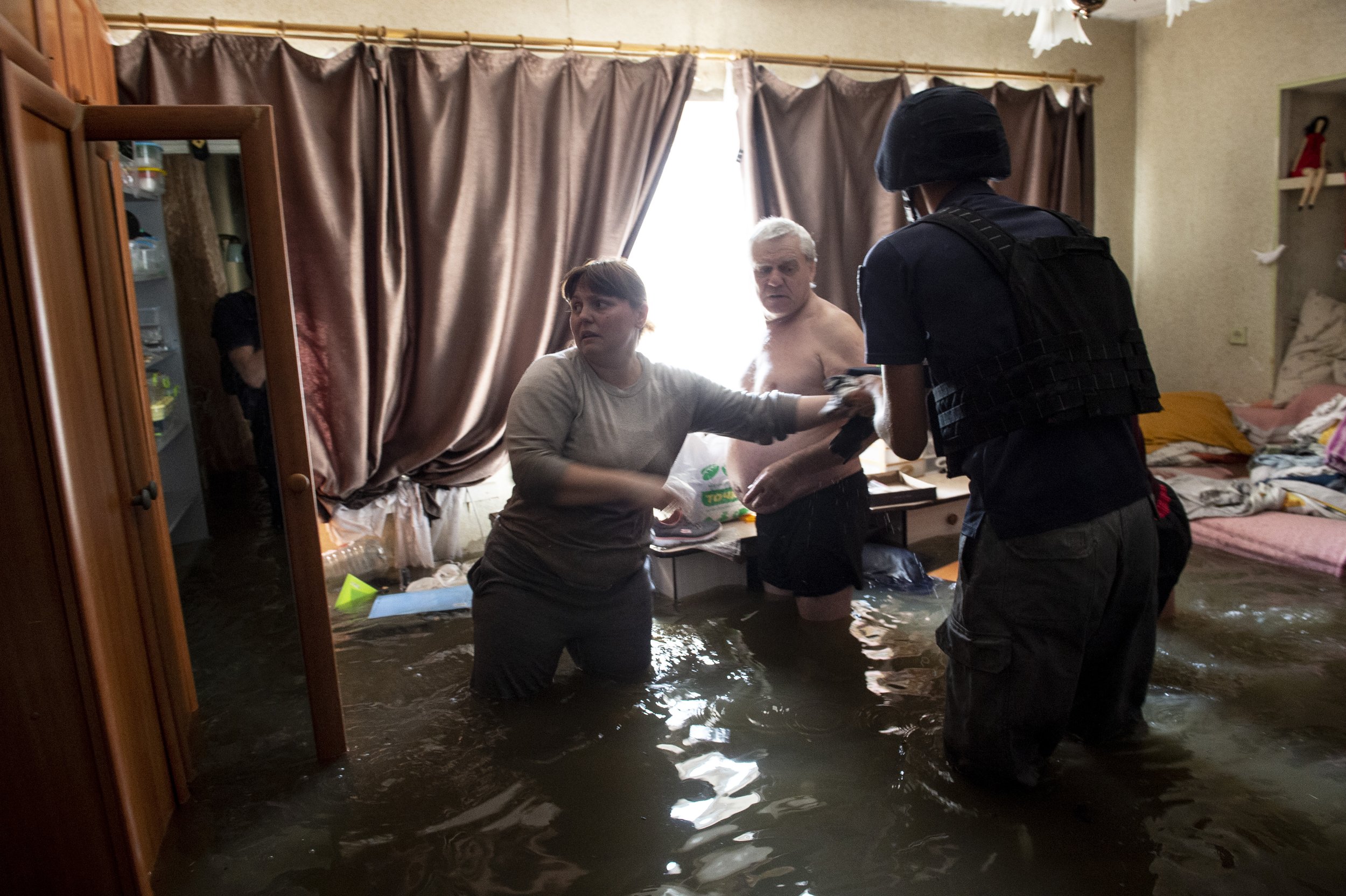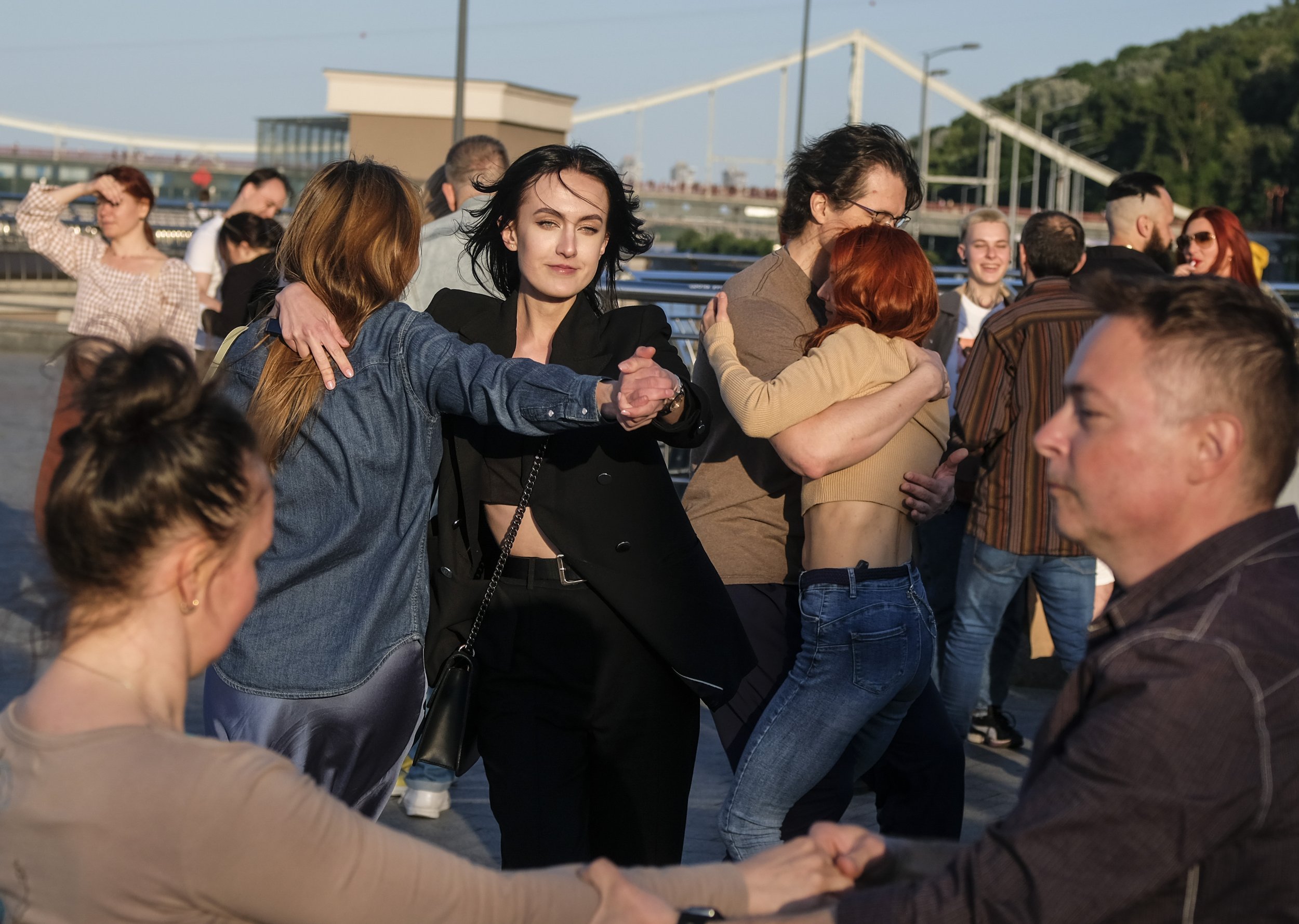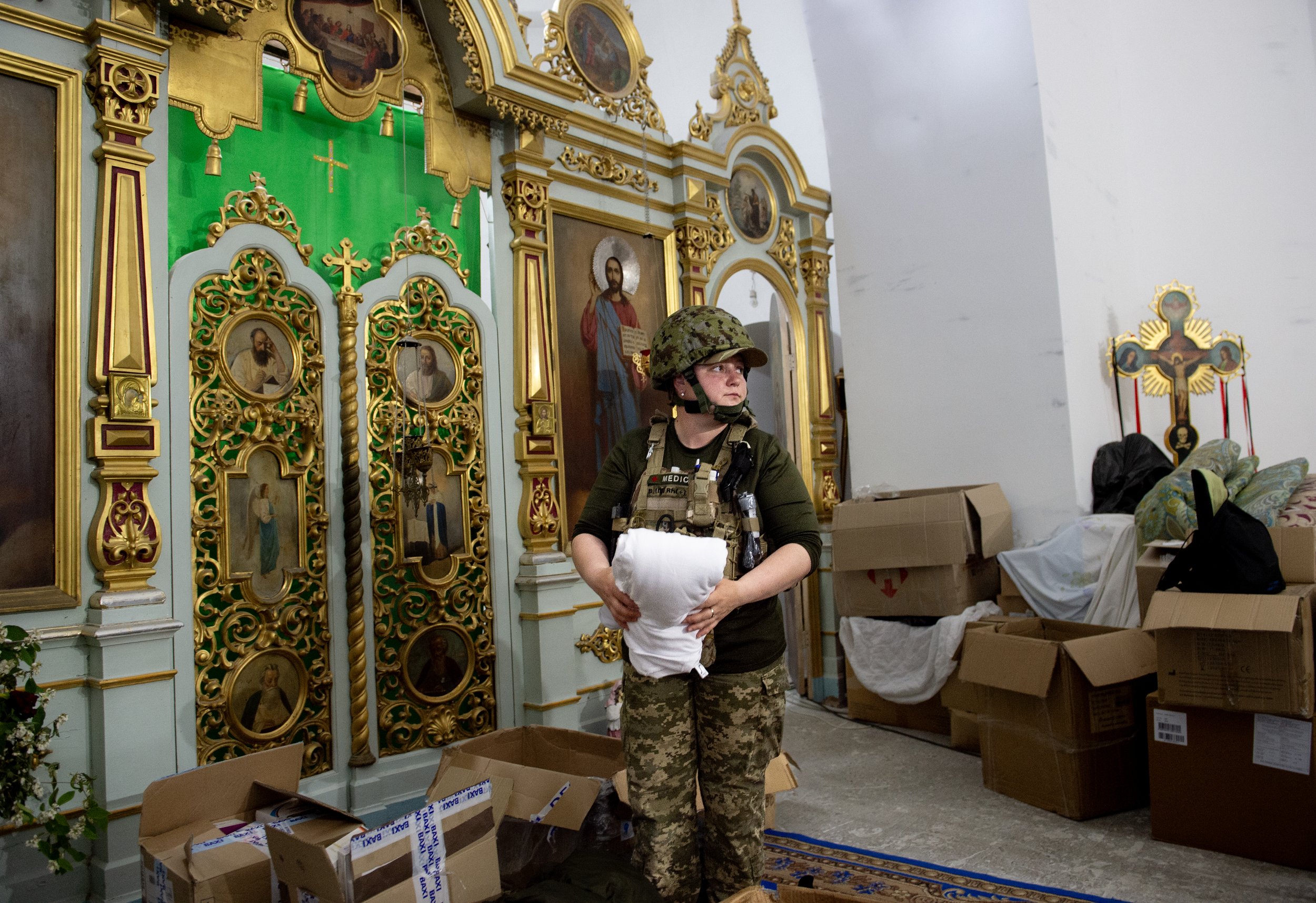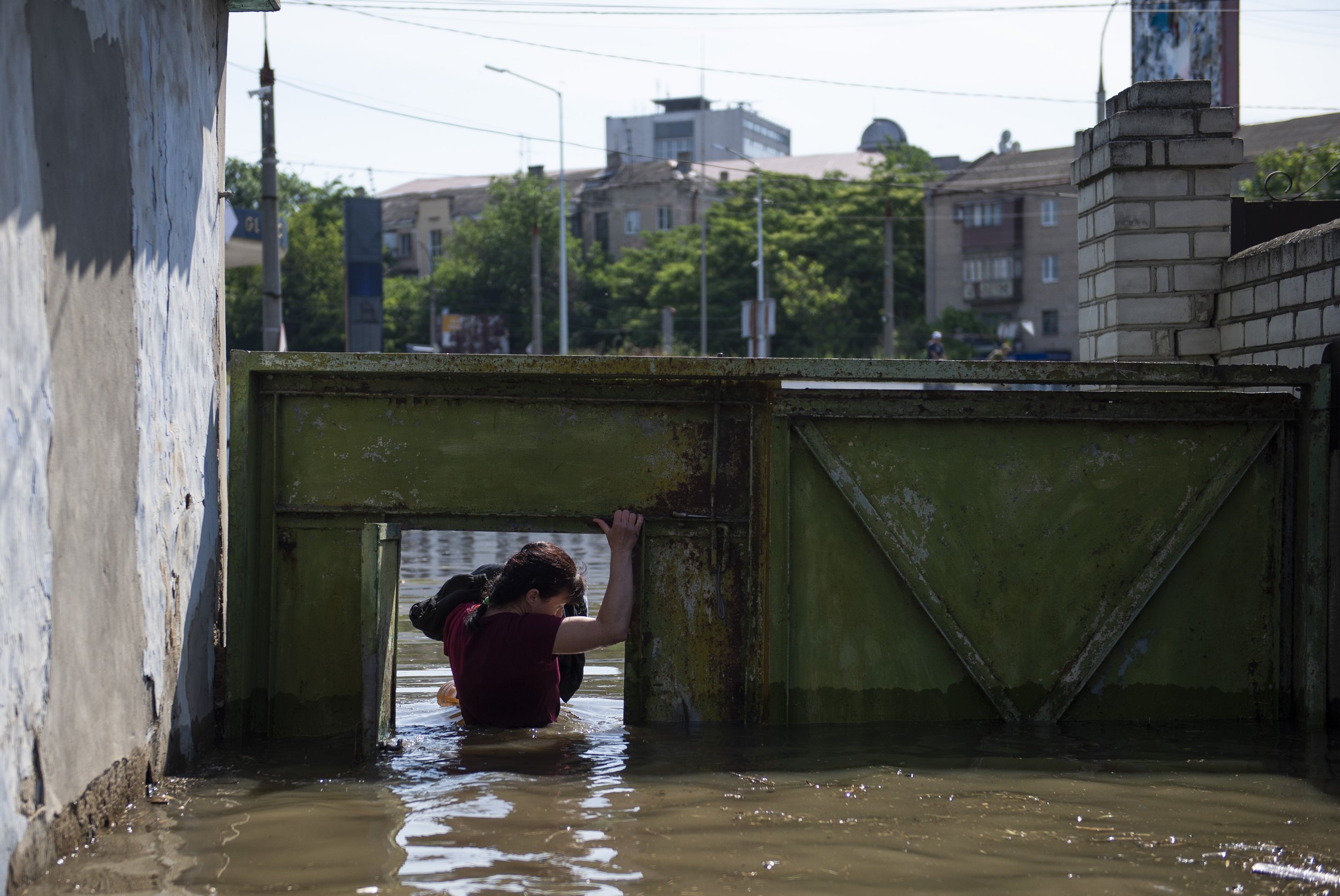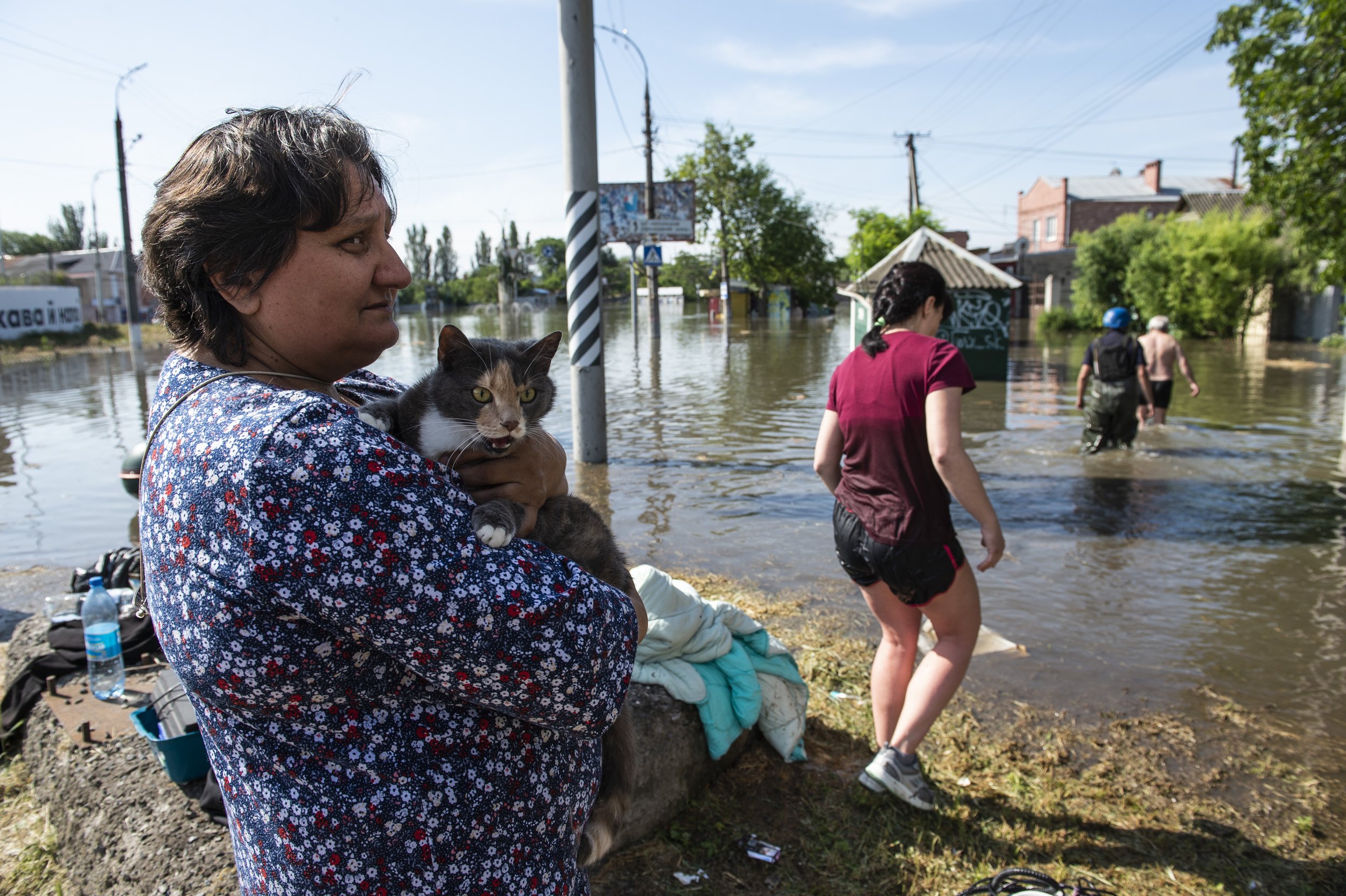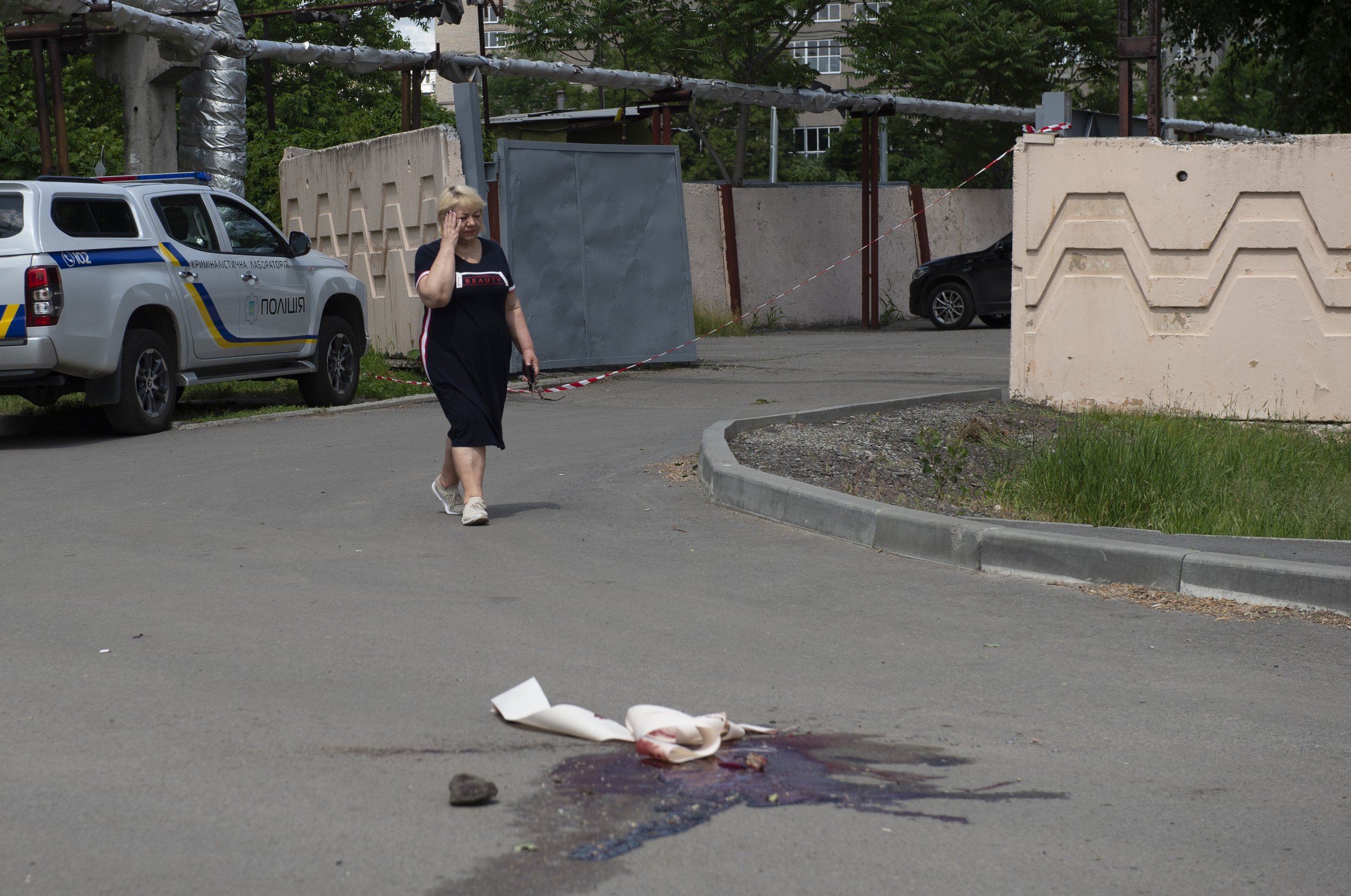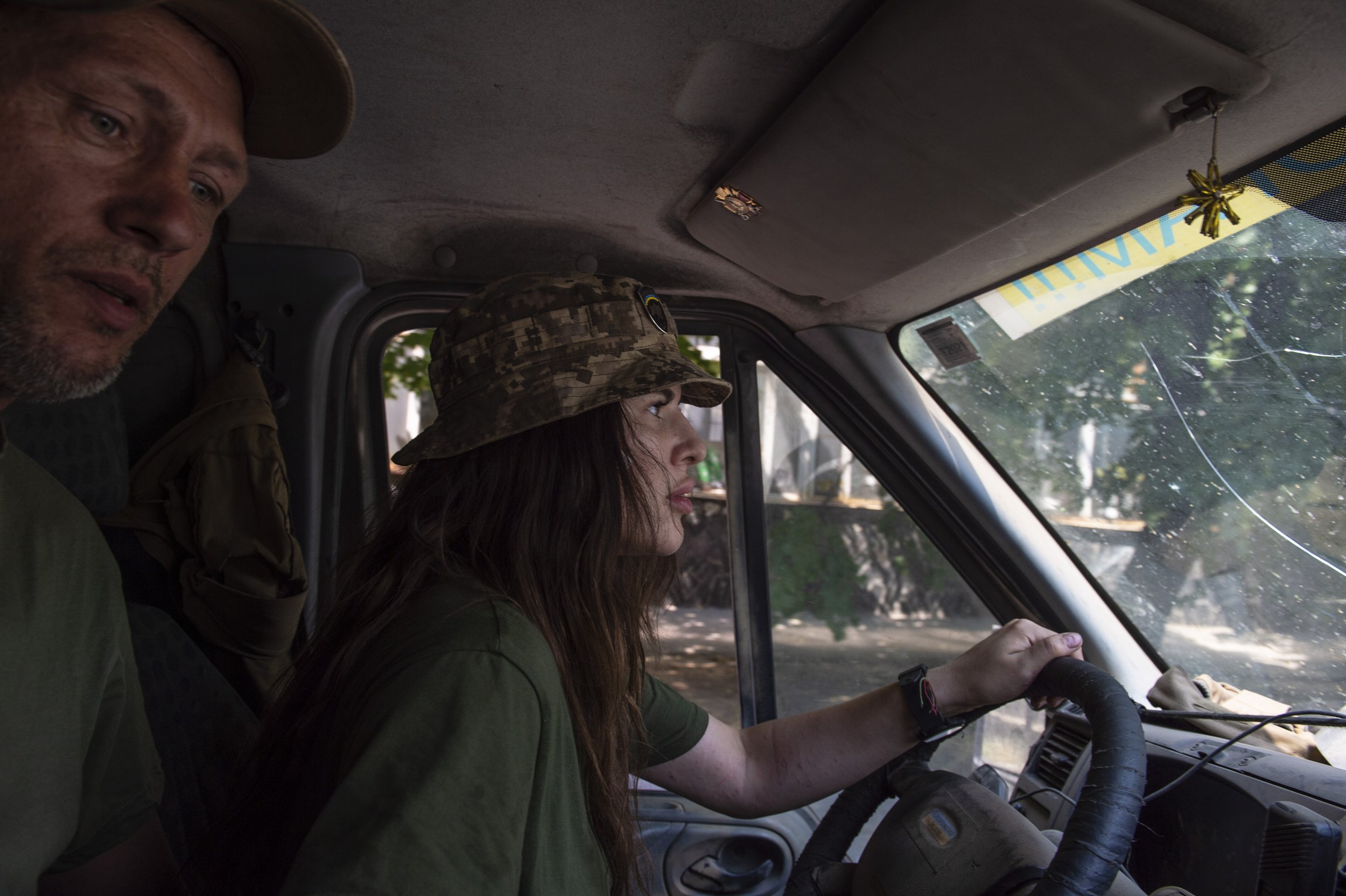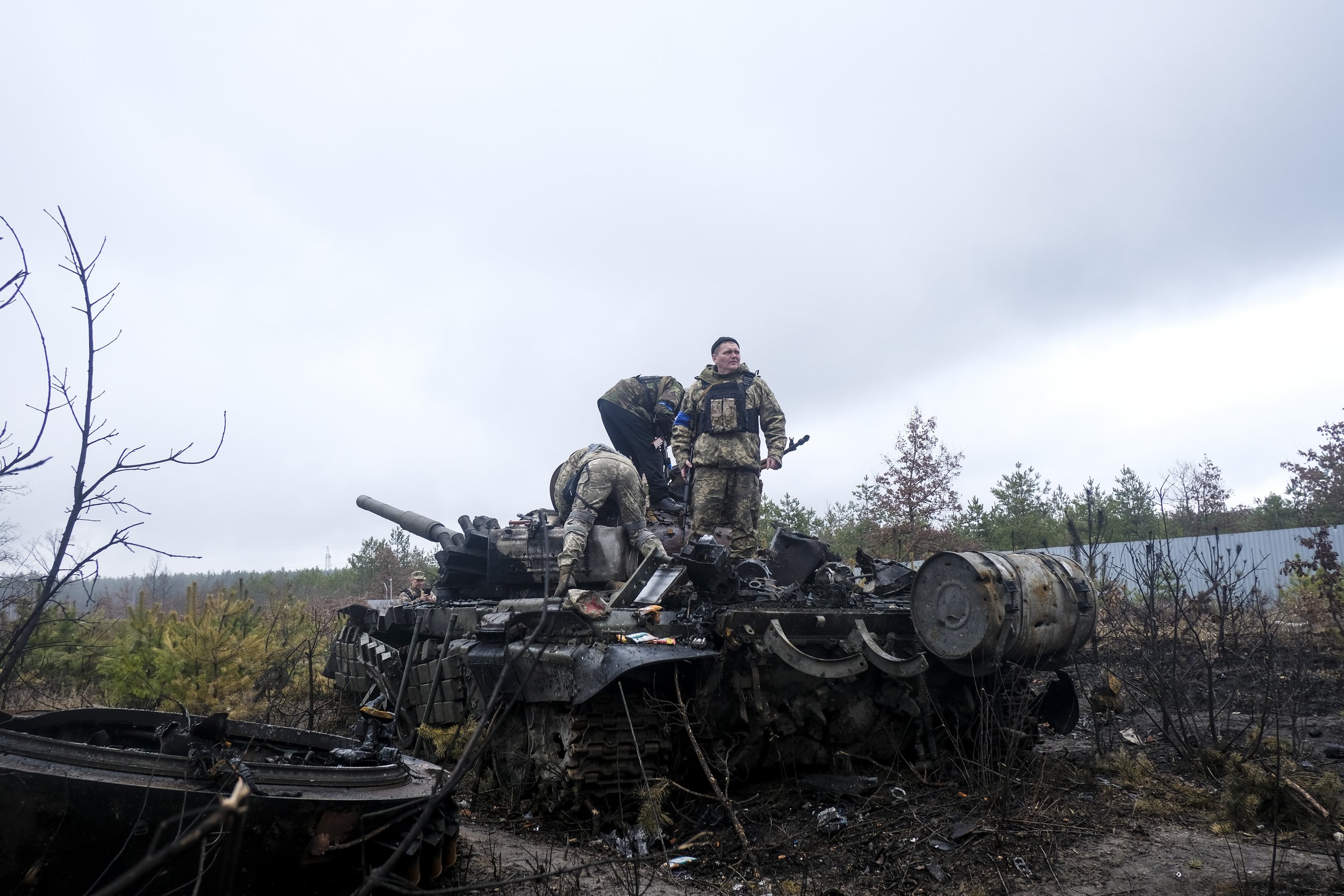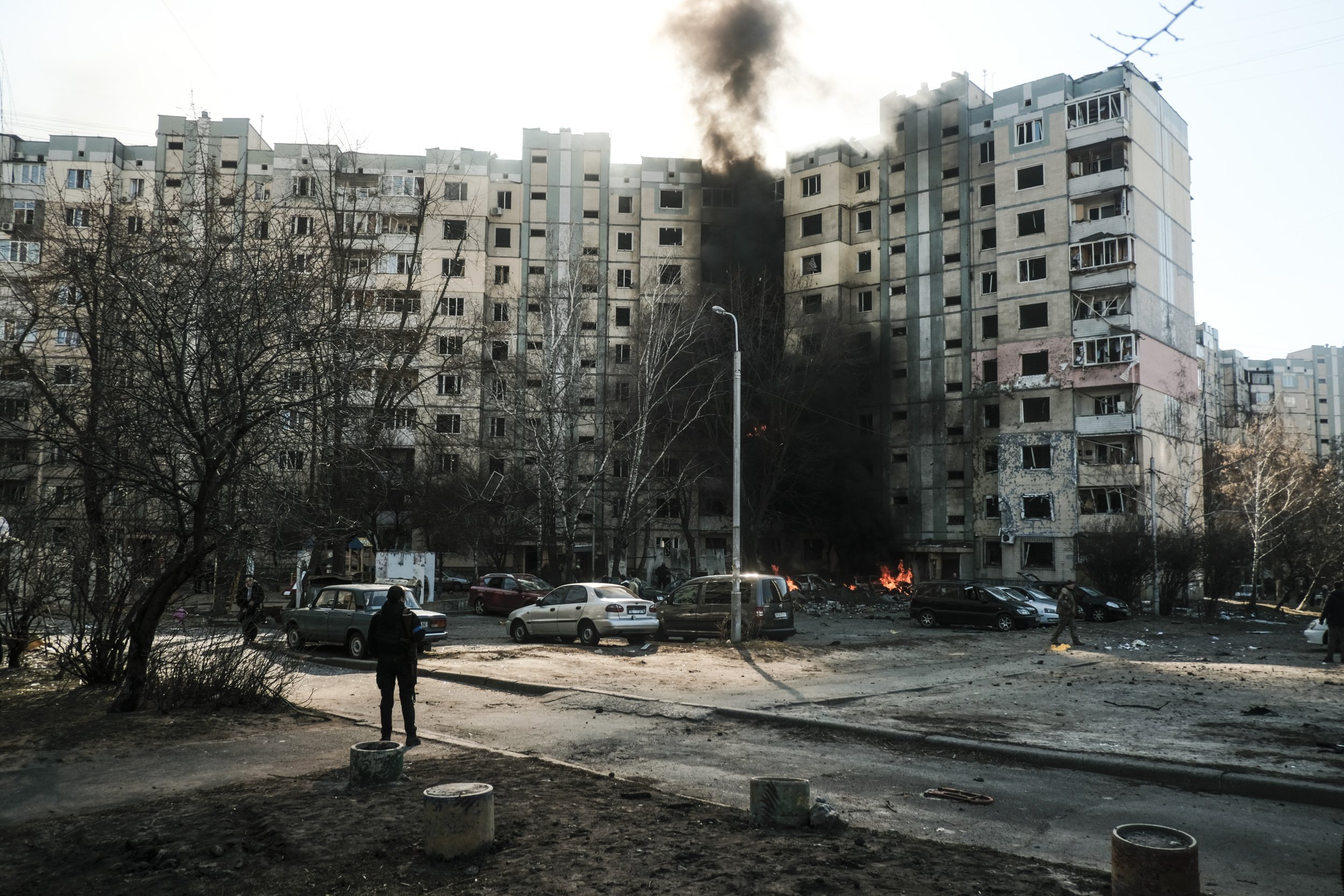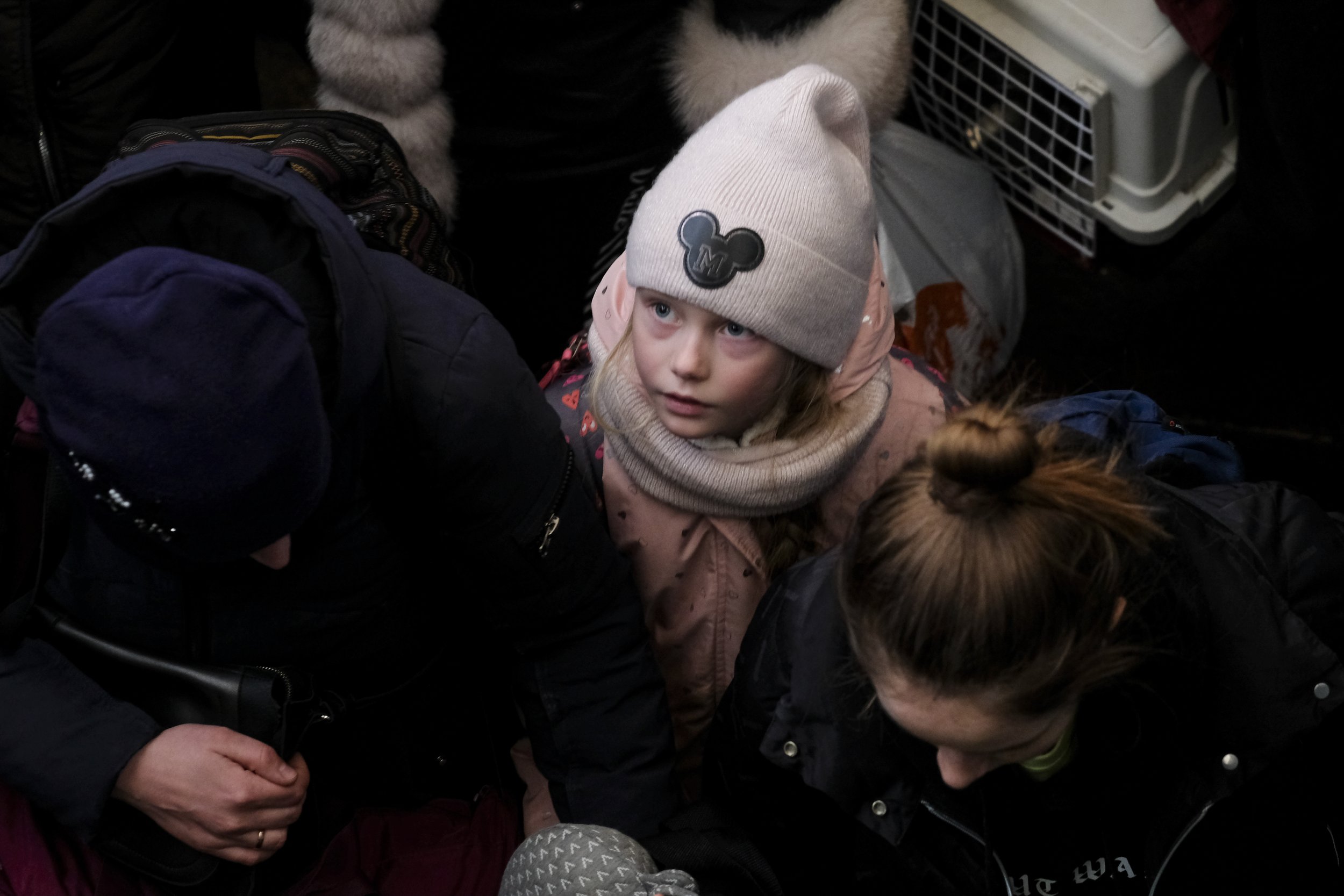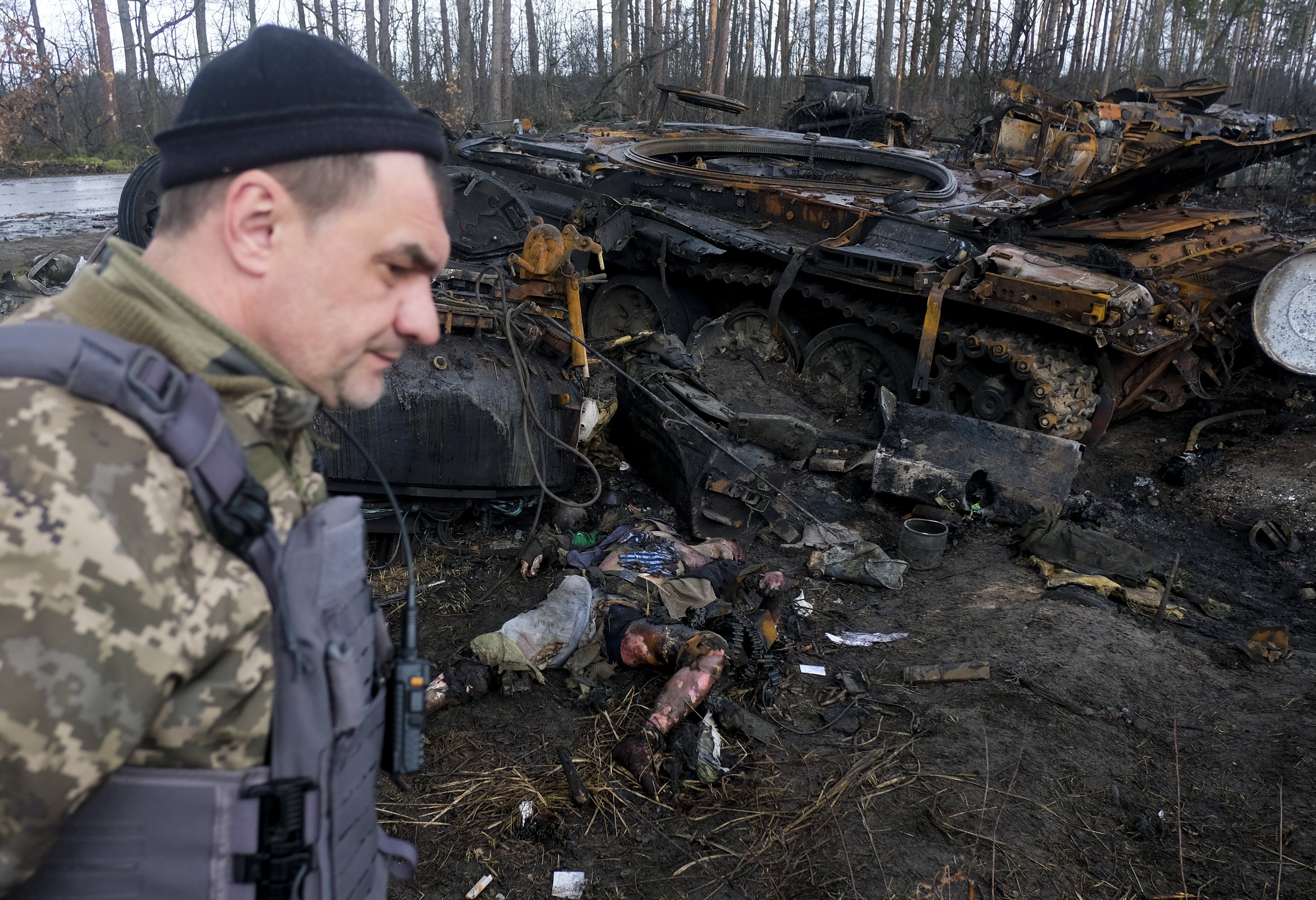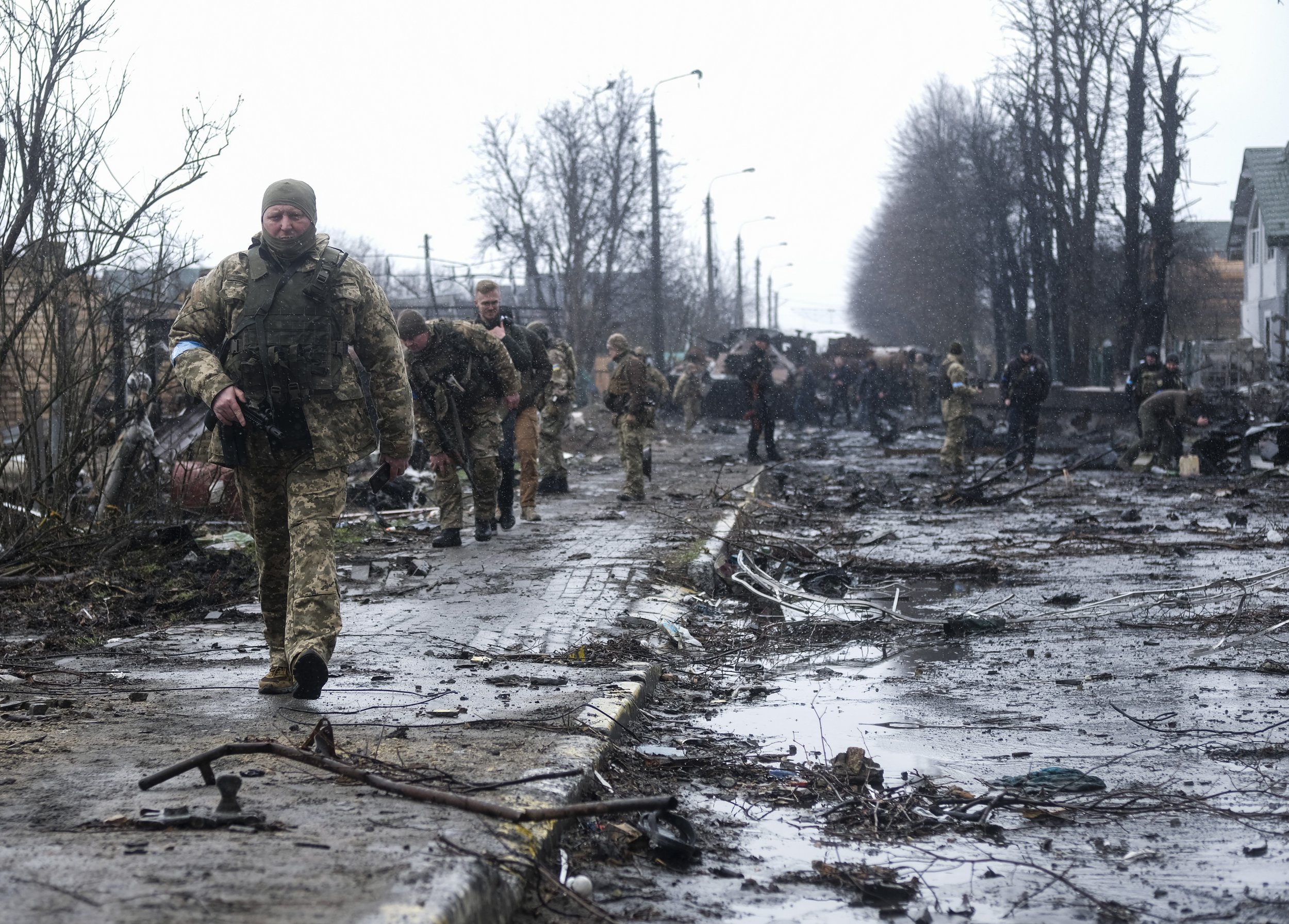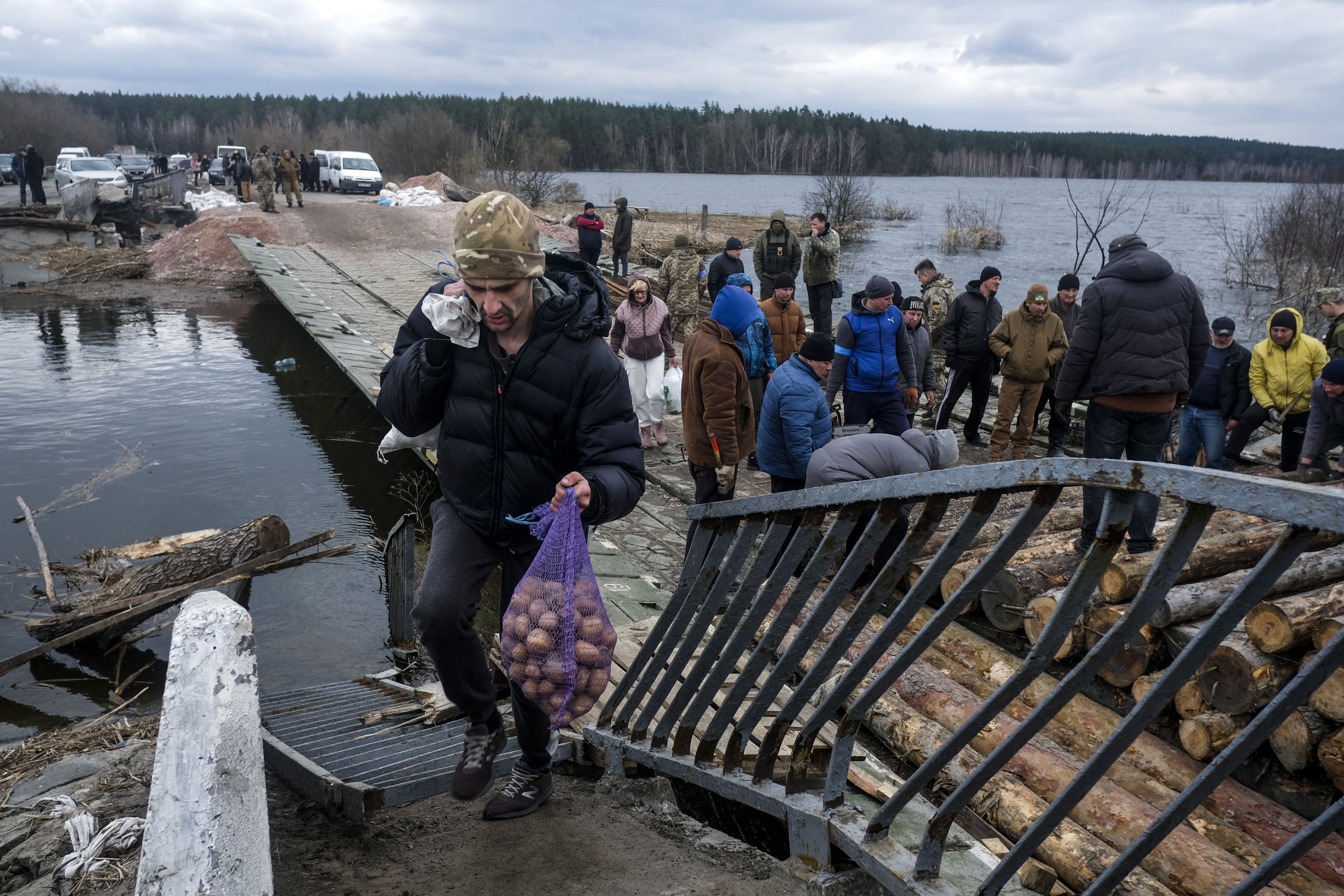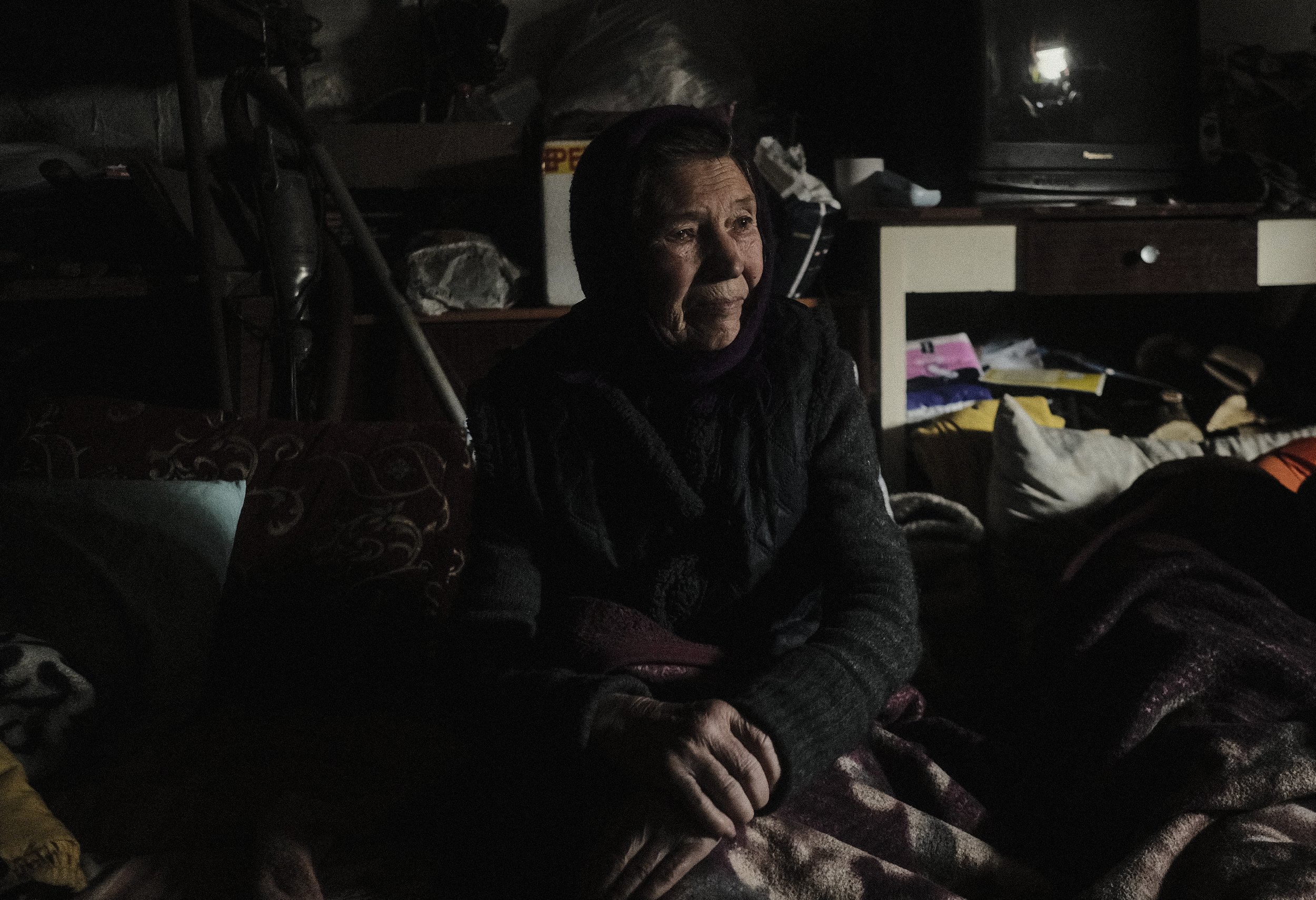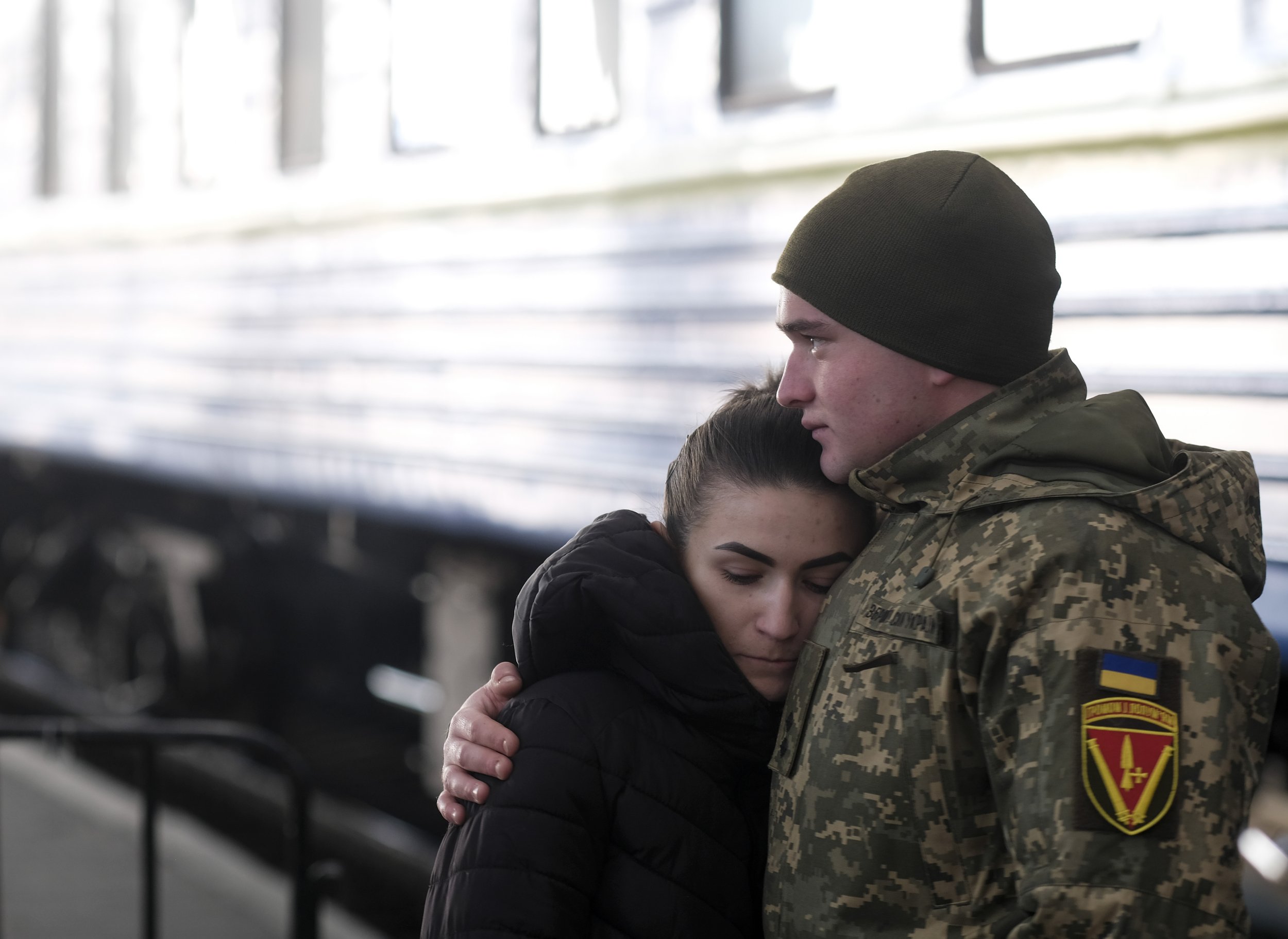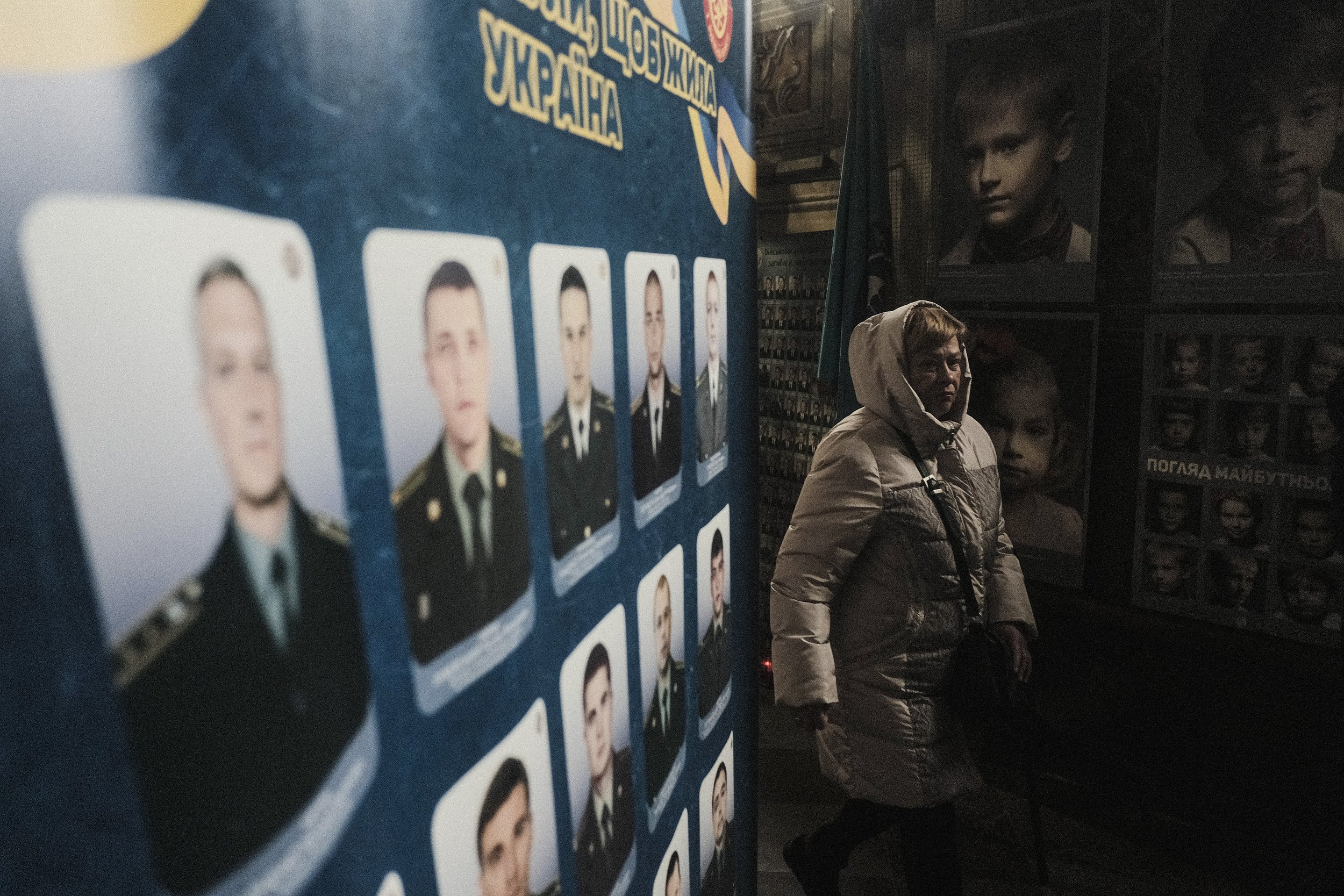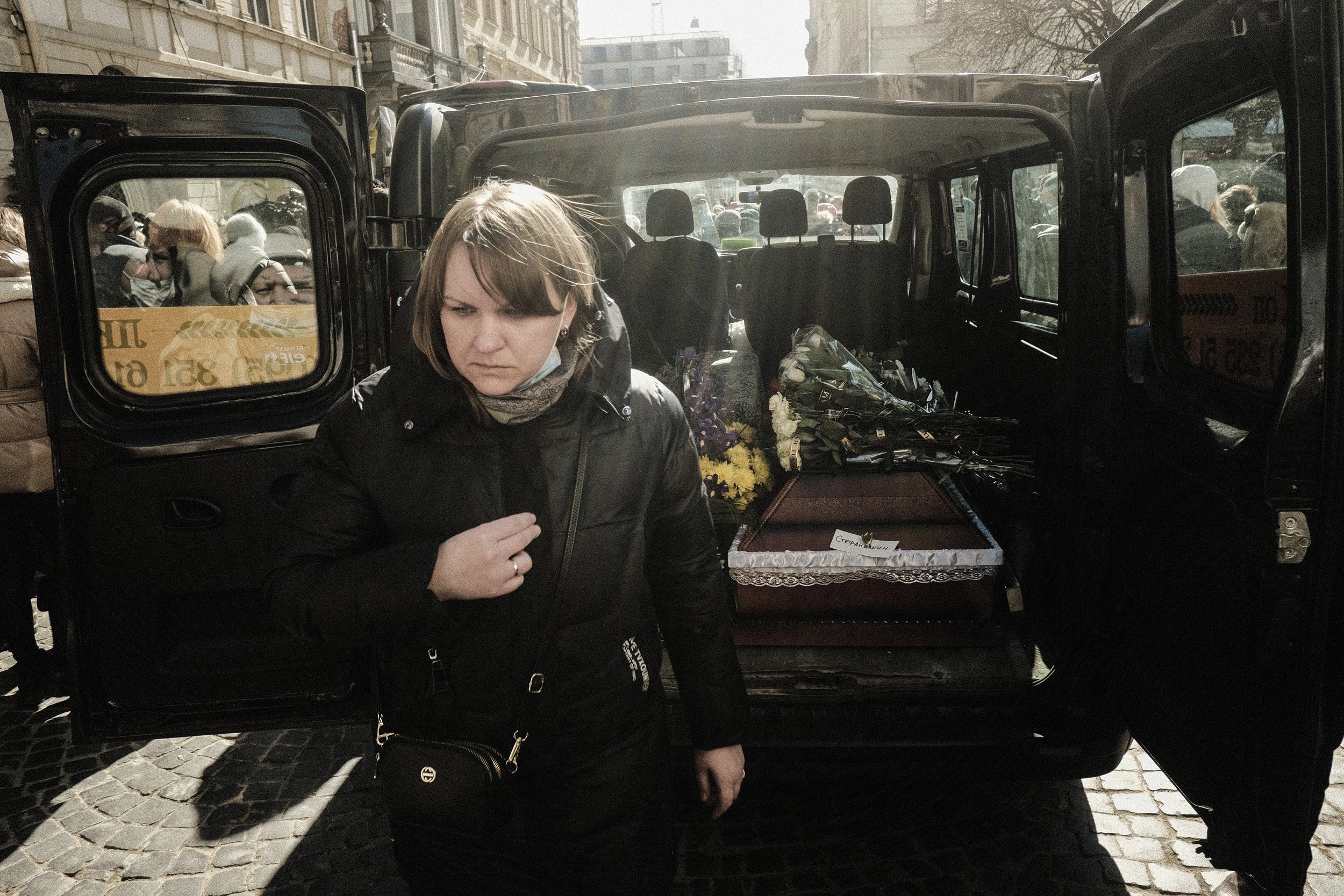***WARNING: THIS POST CONTAINS GRAPHIC CONTENT***
Two years ago, as cold April rain fell from darkened skies, I and my colleague Atef Safadi arrived in Bucha, Ukraine to a scene of absolute horror. The Russian Invasion of Ukraine had been underway now for just over a month, and for the past few weeks, I and other journalists had been covering the rapidly unfolding war from Kyiv as Russian forces attempted to encircle the capital.
Strict curfews were enforced from evening to morning, and throughout the day missiles and artillery destroyed buildings and took lives in the city. The movements of journalists had been tightly restricted as Ukrainian forces fought off repeated attempts by ground forces to creep ever closer to the city. The towns of Irpin, Bucha, Makariv, Hostomel, and many others on the city border had been captured by Russia in early March and fierce fighting for control of the suburbs lasted throughout the month.
Bucha and Irpin had been captured by Russians on March 5 after an earlier attempt failed. The two towns and nearby Hostomel, where Russian airborne troops landed hours after the beginning of the war, share a highway that connects directly to Kyiv, which the Russian forces had planned to use to capture the capital in a matter of days. However, fierce resistance had prevented troop advancement beyond the Irpin River, and logistical problems stalled a 40 mile long armored column driving south from Belarus. For a month Ukrainian and Russian forces fought a protracted battle for control of the suburbs. As April arrived a Ukrainian counter-offensive was underway and soon the Russian troops, bogged down by a multitude of logistical failures and ravaged by Ukrainian volunteer and military units familiar with the terrain and utilizing Javelin anti-tank and Stinger anti-air missiles, were forced to withdrawal from the region, unable to ever fully encircle Kyiv.
After photographing mop-up operations and the result of an ambush on a lingering Russian armored column on a wooded road in the outskirts of Irpin, we took the backroads to Bucha where reports of atrocities were coming out as Ukrainians liberated the town. As we drew closer to Bucha, we began seeing the bodies on the side of the highway, however, these were not the bodies of soldiers as we had seen earlier, these were civilians. The first body we saw was that of an older man. He was laying on the side of the highway on next to his green bicycle, still dressed in the warm clothes he had put on to make his last trip. A single projectile had entered in his head and exited taking most of the back of his head with it.
As we made our approach into Bucha on E373, the picture of horror that was left in the wake of the Russian occupation began to take shape. Bullet-riddled vehicles sat on the roadway, the occupants, or in some cases what was left of them, lay about the vicinity, bearing the signs of the horrors of their final moments. Some had clearly died where they sat, their seatbelts still restraining what was left of their bodies, others were killed attempting to exit their vehicles, and a few had burned when their cars caught fire or exploded. We would learn later that these were the vehicles of civilians who had tried to flee to Kyiv or elsewhere. Amid the carnage of body parts, personal belongings, twisted metal, and broken glass were makeshift white flags and cardboard signs reading ‘Children do not shoot!’ and ‘CIVILIAN’ taped to the cars.
Ukrainian forces had only the previous day been able to enter and liberate the town, as we drove on through the wreckage, crews of soldiers, medical workers, and volunteers continued their grim task of searching for bodies, and checking for booby traps under the ones they found. Each street brought new scenes of absolute devastation and senseless murder, nearly every single building had been riddled with bullets or tank shells and many of the bodies rigged with mines. At one intersection we found a car that had been run over by a Russian BMP, the driver crushed to death was still inside. 50 yards away a van marked with red crosses was riddled with bullets, its contents spilled out on the wet street, the interior stained brown and black with old blood and bits of brain matter. Near it a mannequin had been propped up and used for target practice, liquor bottles and shell casings marked where the culprits had sat and drank while they shot.
The infamous ‘V’ and ‘Z’ had been spray painted on many vehicles and buildings, wherever the Russian troops had looted or killed or destroyed they made sure to leave their mark with spray paint and empty bottles of alcohol. Vokzal’na Street and Yablunska Street were perhaps the most notorious scenes of unrestrained violence. During Russian forces’ first attempt to take the town on February 27, a column of armored vehicles including trucks, tanks, and APCs had been ambushed and then destroyed by Ukrainian artillery. The burnt out husks of the vehicles and the charred carbonized remains of human beings littered every inch of the road where the two streets intersect. In some instances it was impossible to differentiate between what was human and what was melted interior of the vehicles.
The two streets showed a timeline. On Vokzal’na the charred remains of man and machine marked when Russian troops were forced to temporarily pull back from the town amid heavy resistance. They were forced back to the outskirts to regroup, as they did so they continued a steady stream of skirmishing and artillery fire which kept many residents of Bucha and Irpin from being able to escape and instead having to shelter in their basements and cellars. On March 5th, having regrouped and now irritated at the initial failure to decisively capture the town, they launched a new assault, pushing the defending Ukrainian forces out. This is when it is believed that they began to enact their revenge on the civilians that had become trapped.
In a yard at the end of Vokzal’na Street, the decomposing bodies of two men lay amid swelling puddles in the yard, the grass green and growing with the arriving spring. Both men had received a single bullet to the head, their decomposing faces still a picture of horror and fear. Nearby, building materials and tools sat neatly next to a shed. Unbeknownst to my colleague and I at the time, inside the house was the body of a woman. At the end of the road several vehicles sat idle on flat tires, riddled with bullets or shot nearly in half by a tank, these were the vehicles in which several residents tried to use to drive away from the mayhem or to try and find their loved ones, summarily used as target practice after their occupants were killed.
A deep investigation by the New York Times in collaboration with Bellingcat and Janes would go on to reveal that the unit responsible for much of the killing was the 234th Guards Air Assault Regiment, an airborne unit whom are among the best trained and equipped in the Russian Army. Commanded by Lt. Col. Artyom Gorodilov, the 234th unleashed a campaign of violence and terror on the remaining citizens of Bucha, littering the streets with the bodies of men, women, and children, and filling mass graves with victims whose only crime was being unlucky enough to cross paths with the soldiers. Many victims left on Yablunka Street were found with their hands bound, many bearing signs of torture. Survivors of the massacre report that the soldiers went house to house, robbing and killing anyone they deemed ‘threatening’ among those deemed threatening were the elderly and the young including 37 children, the youngest just two-years-old.
It is nearly impossible to comprehend the level of savage violence that the occupying Russian forces unleashed on their helpless victims, every house, every street, every basement, every garage was a new atrocity. Survivors report that many victims were first tortured for sometimes hours before being executed, in the days following Bucha’s liberation dozens of women had reported being raped or gang raped, and some of the victims discovered in the mass graves bore signs that they were sexually assaulted before being murdered. In Bucha alone over 450 civilians were killed, either shot while trying to get food, water, or reach relatives, or summarily executed for various ‘transgressions’, those that were lucky of course only had a limb chopped off.
As the light grew dim we had to depart from the hell on earth that only a month before had been a charming little town just outside of Kyiv. On the drive back I could think of nothing other than the historical accounts of horrific massacres I had read about before, the mongols, Rawanda, the crusades, the Einsatzgruppen, Vukovar. Already Russian media was denying claims of any sort of massacre, after all the entire ‘special military operation’ was hinged on liberating the Ukrainians from a ‘neo-Nazi’ government.
Bucha wasn’t the only scene of tremendous cruelty. To the west, the small town of Borodyanka had been nearly leveled. A Russian fighter had fired a missile directly into a residential building, blowing a hole through the middle of it and burying most of its residents alive as it collapsed. There too civilian vehicles attempting to flee were targeted by Russian forces. In Hostomel, civilians including the mayor were tortured and executed by the occupying Russian forces. In all the number of civilian deaths may not ever be known, but two years on the number throughout Kyiv Oblast that were killed in March of 2022 is over 1400.
Atrocities have seemingly always followed Russian military campaigns, from Chechnya to Transnistria, Afghanistan to Syria. War of course lends itself to such horrors occurring, there is no such things as a ‘good’ or ‘clean’ war, they’re all dirty and rife with murder and terror, but few militaries have employed such tactics in the way Russia has.
A year after, in 2023, I returned to Irpin and Bucha. To my surprise the city was almost unrecognizable. Of course the physical scars were still visible here and there in the form of bullet holes or spiderweb patterns on asphalt, but the buildings rebuilt where they could be rebuilt, and where they had been razed new ones had been erected. A plaque had been erected on Vokzal’na Street complete with a QR scan code to see what it had looked like when it was first liberated. For many in Ukraine, the horrors of Bucha were just one in a hundred other similar instances that continue to happen as the war unfolds.
The deeper damage remains though, for those who survived it and who continue to survive such a devastating war. Hundreds of thousands have perished in only two years, an entire generation of Ukrainians and Russians continue to be snuffed out with each day the war continues. In modern life the most life changing of events can be quickly forgotten and the raw feelings it evoked faded as we continue to be bombarded by information and new crisis elsewhere. To put it in another way, people who don’t face these things every single day, soon grow bored of the novelty of something as serious as a massacre or the largest war on European soil since WW2, we quickly forget how shocking and sad and horrific it was when two years ago today we watched some of the most brutal violence be uncovered. It is unlikely that any of the perpetrators will ever face any semblance of a trial or any consequences for their actions, but it is important for us to remain with and not forget the disgust and shame and sorrow we felt when this first happened.
These images as well as the images other journalists took of Bucha and the aftermath of the massacre have gone on to become a mounting volume of evidence against the perpetrators of this act of inhumanity, in the hopes that someday those responsible will be brought to justice.
Photographs and words: ©Matthew Hatcher 2022


























